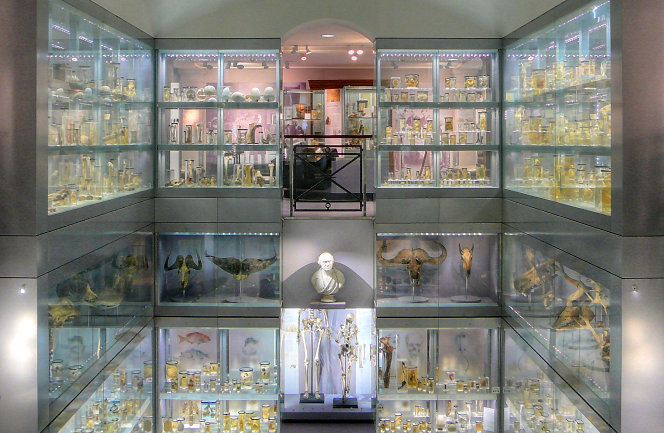Hunterian Museum
Hunterian Museum
Known as the Father of Scientific Surgery, John Hunter (1728–93) was a brilliant but temperamental anatomist and surgeon who sought to emphasize the relationship between structure and function in the human body (and in the bodies of all kinds of living creatures), thus providing an analytical basis for surgical practice. He died after suffering a fit during an argument at St George’s hospital, Hyde Park Corner (since relocated to Tooting), over the acceptance of students for training.
During his lifetime Hunter assembled a vast collection of instructive specimens and preparations at his house in Leicester Square, which he arranged into a teaching museum. The house’s contents were purchased by the government in 1799 and given to the Company of Surgeons, now the Royal College of Surgeons, which has its headquarters in Lincoln’s Inn Fields.
By the end of the 19th century the Hunterian Museum contained nearly 65,000 specimens covering anatomy and pathology, zoology, palaeontology, archaeology and anthropology.
The college was bombed in 1941 but a large part of the collection survived and the highlights are today exhibited in a series of stylish galleries, revamped in 2004 – and again in 2017–23. They include human and animal anatomy and pathology specimens, wax teaching models, surgical and dental instruments, paintings, drawings and sculpture.


